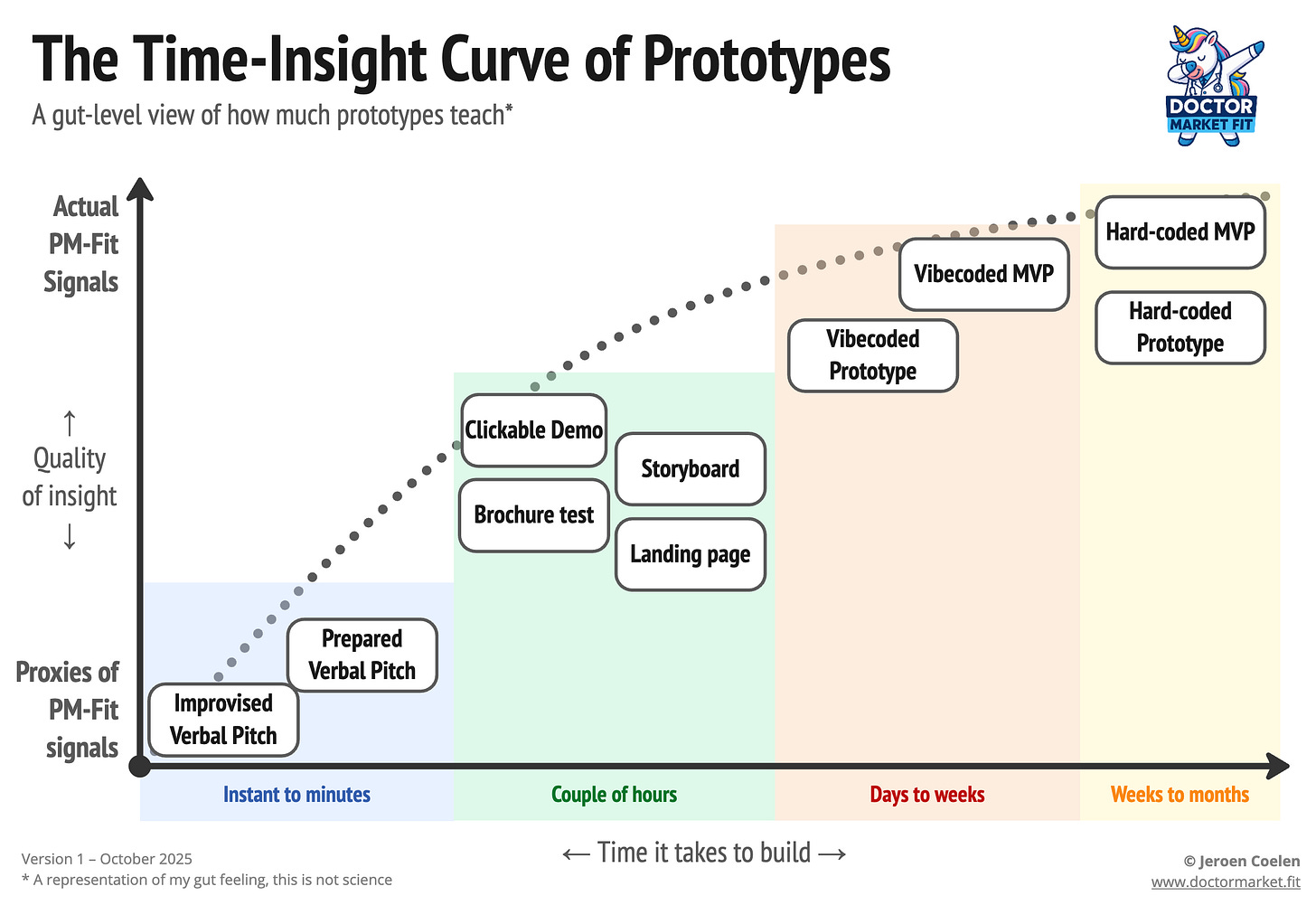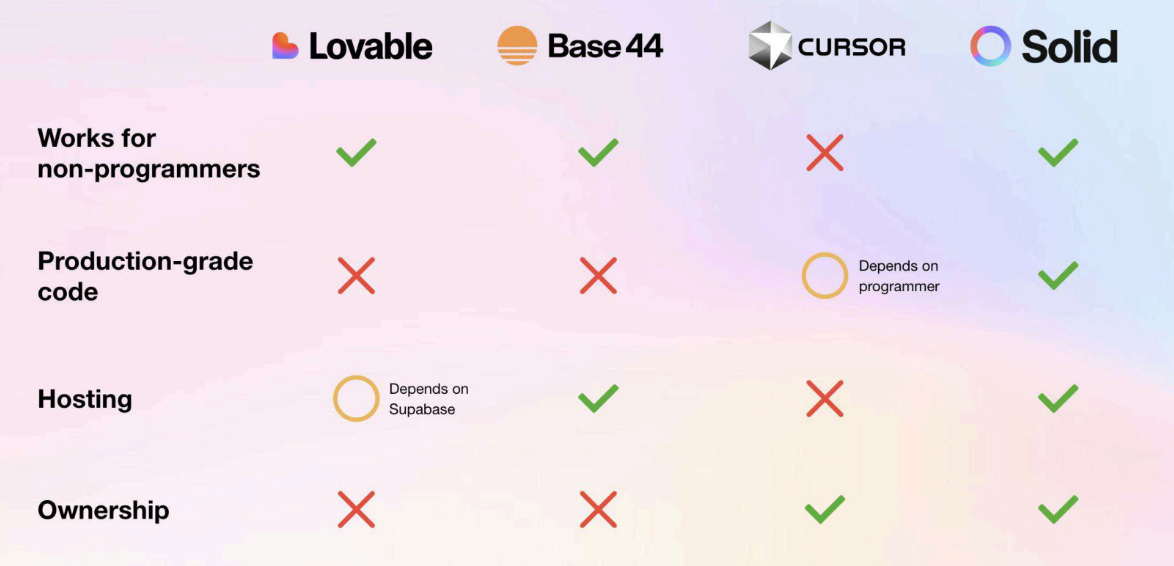To vibecode or not to vibecode?
How to test your idea before you waste weeks vibecoding
Vibecoding tools like Lovable and Base44 promise to help you build products fast.
But in reality, most of the products built with those tools are failing.
In this post, I’ll share smarter ways to test your idea before you build an MVP.
And reveal the best vibe coding platform for building production-grade web apps—so you can launch fast without getting stuck or restarting after v1.
“Time spent building is time not talking and selling to potential customers” - Doctor Market Fit
As Paul Graham says: “The number one reason startups fail is because they build something nobody wants.”
That’s why jumping straight to coding isn’t always the smartest move. Here are the alternatives to consider. A fifteen-minute prototype can save you two weeks of building the wrong thing. Ouch.
1️⃣ Verbal pitch
Talking to potential users lets you test multiple value propositions quickly. You can pitch ideas, see reactions, and evolve your concept before investing a cent.
Tools
2️⃣ Borchures, Mockups, Storyboards, Landing Pages
Showing beats telling. A mockup or brochure gives customers something real to react to—and forces you to get concrete. Even a simple flyer gets more traction than a perfect pitch.
Tools
Figma for mockups and clickable demos
Canva for fancy brochures
15-minute Brochure test template
Umso.co for landing pages
3️⃣ Vibecode Prototypes and MVPs
Lovable / Replit / Bolt are great for demos… but when you want to build something serious for the long run, you hit a wall.
Those tools market themselves as building “full-stack apps,” but any technical person would know they just built temporal prototypes. They don’t build software like a real developer would. Their backends are wall-gardened, limited and prebuilt. If your project ends up being successful you will have to rebuild it eventually.
For example, Base44 helps you spin up quick web apps, but those projects rely on a limited prefabricated backend that only Base44 uses. No developer would ever use this backend for a real project. If you ever want to extend the project, you just can’t (read here more about it). You will only be able to export the frontend. You will have to restart your project.
I’ve found a better tool: Solid. They launched 1 month ago, and already are in 6 figures ARR and growing fast.
Solid builds your web app exactly like a real developer would: Node.js, React, TypeScript, PostgreSQL, Docker, etc. You get production-grade code you can scale, maintain, and extend.
Don’t waste time on AI builders that only build demos. Start right. Build for the long run. Build a prototype that you can grow into a large project.
👉 Try Solid for free.
4️⃣ Hardcode MVPs
Hardcoded MVPs usually take quite a long time to build. It’s fun if you are an engineer, but I’ve seen many founders who think they can build it in '1 week’ that run into building for 2 months.
If you want to take this on, sure! Go for it. Perhaps use Cursor to move faster.
But, as Reid Hofman says, “If you are not ashamed of your first version you shipped too late.” The only way to build something people truly want is to put a prototype in front of them and iterate quickly.
Most founders know this in theory (launch fast, learn from feedback, and improve), but few actually do it. They get stuck coding more and more features instead of shipping.
To take a shortcut, Solid might be for you to create that first MVP fast. You can continue working in their web app. But Solid also has an extension to Cursor, Windsurf, and more, if you prefer to work in your IDE.




Awesome!
Fab article. I love the vibe movement despite the current limitations (is that an oxymoron compared to where we were before Vibing?)